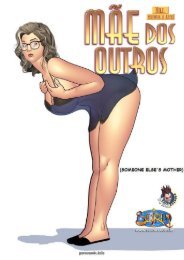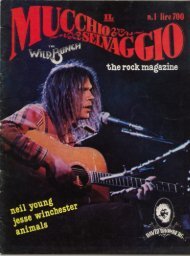AmericanCinematographer201201
Create successful ePaper yourself
Turn your PDF publications into a flip-book with our unique Google optimized e-Paper software.
◗ Animal Instincts
Top: The camera crew dollies past a muddy battlefield for a sequence staged at Wisley Airfield in
Surrey, England. Middle: An English soldier spots Joey after the horse becomes entangled in
barbed wire between enemy trenches. Bottom: Albert and his nemesis from Devon,
David (Robert Emms, right), charge into battle.
Of course, ideas developed in prep
often change on set. One example of this
in War Horse is a British cavalry charge
that was filmed on the Stratfield Saye
estate. The scene expresses a key idea in
Morpugo’s book: that World War I was
the end of the horse’s usefulness as an
instrument of war. As Dubin sums it up,
“The story is about the change from a
gentleman’s war to a mechanized war.”
The scene begins with the British
cavalry approaching a German camp
through a field of golden reeds. “These
soldiers are very handsome, very proper,
very passionate about the glorious aspect
of the war, and I wanted it to be a bit
larger than life,” says Kaminski. “We
tried to create the glorious part of it, but
with a realistic take.”
The charge appears successful at
first, but suddenly the Germans open fire
with machine guns. No blood is shown.
Instead, the film cuts to a shot of riderless
horses, and finally the camera pulls
back to reveal the field littered with dead
soldiers and horses. “This sequence was
extensively previsualized because the
charge involved dozens of horses galloping
at high speed on uneven terrain,” says
Kaminski. “We used two or three different
camera platforms that would travel at
various speeds, and we occasionally had
two cameras and two insert cars traveling
52 January 2012 American Cinematographer













